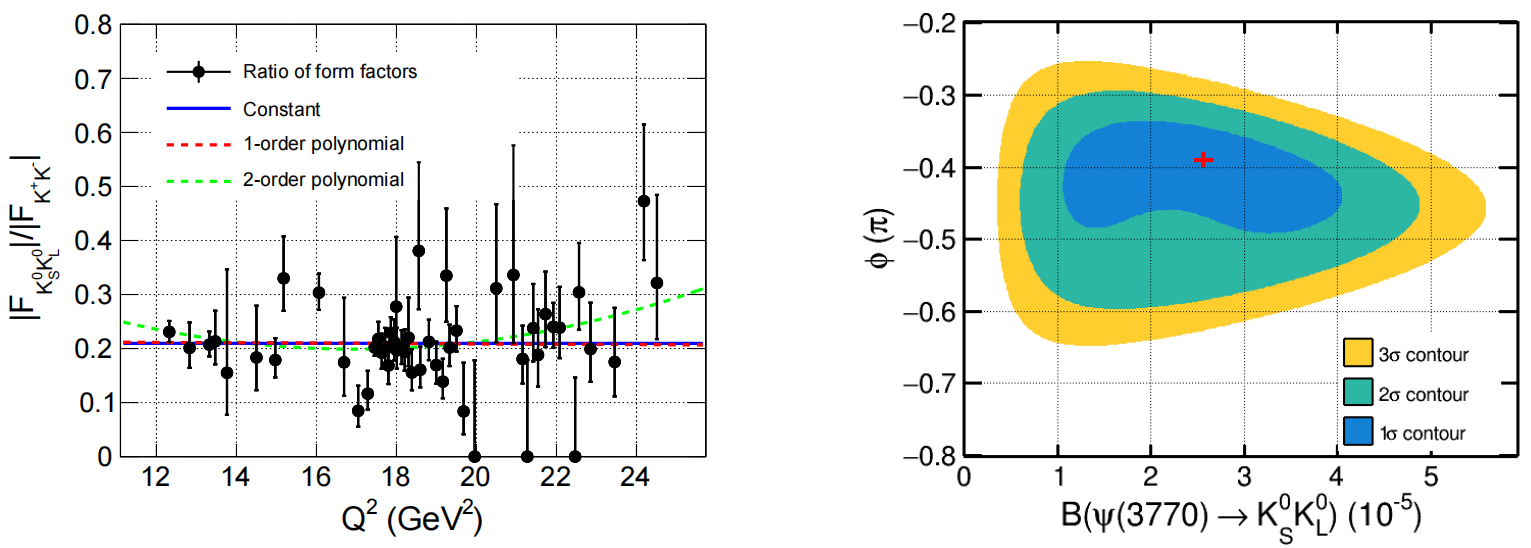BESIII Collaboration has precisely measured the effect of different quarks on the wave function of kaon and reported the first observation of ψ(3770) charmless decays to K
S0 K
L0. This research has been published in Physics Review Letters on Mar. 25th, [Phys. Rev. Lett. 132, 131901 (2024)].
Understanding the internal quark-gluon structure of hadrons based on quantum chromodynamics (QCD) has been one of the fundamental goals of particle physics. An important tool is to measure the electromagnetic form factors of hadrons at large momentum transfers, where a virtual photon acts as a probe that allows us to see the electric charges of the quarks and gluons inside of the hadron. Kaons are of great interest because their constituent quarks differ in mass by more than one order of magnitude, which offers an important opportunity to investigate how different masses of the constituent quarks affect the hadron wave functions.
Under the assumption that quarks have negligible mass differences, the process of high-energy electron-positron annihilation into neutral kaon pairs is forbidden. The experimental observation of this process is therefore a sensitive measure of the existence of mass differences among quarks, also known as flavor-SU(3) symmetry breaking.
Based on the world's largest data sample collected at the BESIII detector in the range of 3.5-5.0 GeV, BESIII experiment discovered the process e+ e-→KS0 KL0 and measured the cross section for the first time and calculated the ratio of neutral-to-charged kaon form factors. It is found that the ratio is close to a constant of 0.21±0.01 at large momentum transfers, indicating a small but significant effect of flavor-SU(3) breaking effect in the kaon wave function and providing essential data for understanding the internal structure of kaons. Furthermore, a charmless decay ψ(3770)→KS0 KL0 is observed for the first time at a statistical significance level of 10σ and the branching fraction is measured to be (2.63-1.59+1.40)×10-5. This branching fraction is in good agreement with the predictions of the S-wave and D-wave charmonia mixing scheme, which shed light on the interpretation of the longstanding “ρπ puzzle” in hadronic charmonium decays.

The left plot shows that the ratio of neutral-to-charged kaon form factors approaches a constant 0.21±0.01 at large momentum transfers; the right plot presents the world's first measurement of the branching fraction of ψ(3770)→KS0 KL0.
URL:
https://link.aps.org/doi/10.1103/PhysRevLett.132.131901DOI: 10.1103/PhysRevLett.132.131901


